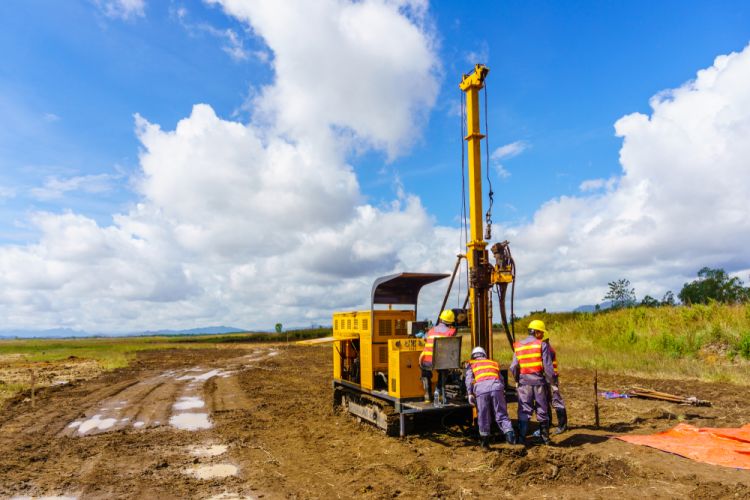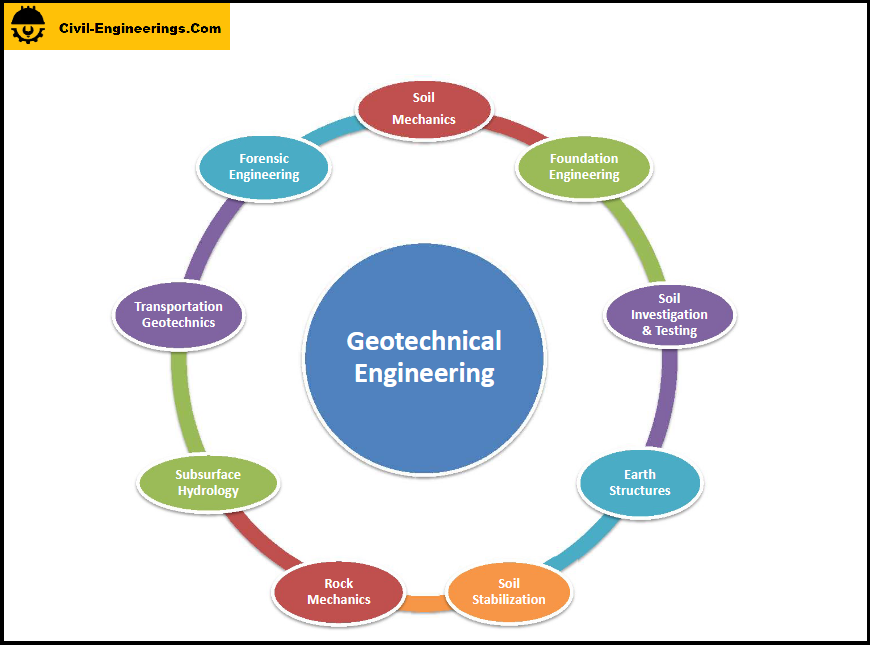The Facts About Geotechnical Engineering For Construction Projects Uncovered
The Facts About Geotechnical Engineering For Construction Projects Uncovered
Blog Article
Geotechnical Engineering For Construction Projects Can Be Fun For Anyone
Table of ContentsThings about Geotechnical Engineering For Construction ProjectsThe Buzz on Geotechnical Engineering For Construction ProjectsUnknown Facts About Geotechnical Engineering For Construction ProjectsThe 8-Minute Rule for Geotechnical Engineering For Construction Projects10 Easy Facts About Geotechnical Engineering For Construction Projects DescribedGeotechnical Engineering For Construction Projects Fundamentals Explained
The function of geotechnical engineering dramatically handles recognizing the features of dirt and rock, which may differ substantially by their density, moisture web content etc. These features have to be examined by geotechnical engineers to forecast their movements under numerous circumstances. The safety along with security of structures are influenced by dirt conditions, making this analysis required.A geotechnical designer will check out soil to identify the bearing ability of the earth and recommend correct structure types, such as superficial foundations, deep foundations like stacks, or specialized solutions like floating structures for soft soils. Understanding the features and actions of soil and rock, along with how they connect with buildings that have been erected on or within them, is just one of the key descriptions for why geotechnical design is very important.
Along with architectural planning and construction, geotechnical design is also vital to the repair and maintenance of pre-existing frameworks. Age-related degradation or added issues could affect a framework's security and efficiency. Environmental defense is accomplished with geotechnical design. Experience in air, water, and soil quality maintenance is put to utilize by geotechnical engineers to lessen the negative impacts of tasks.
To sum up, geotechnical engineering is an important self-control that preserves the resilience and integrity of civil framework. Geotechnical designers contribute to making building projects effective all over the globe by understanding the behavior of earth materials and using suitable planning techniques.
The 45-Second Trick For Geotechnical Engineering For Construction Projects
The foundational security of any kind of project is essential. Geotechnical design plays an essential duty in making certain that frameworks are developed on solid ground, literally and figuratively. By checking out soil, rock, and subsurface problems, geotechnical designers provide crucial understandings that aid in the design, construction, and upkeep of buildings and infrastructure.

Geotechnical Engineering For Construction Projects - Truths
Laboratory screening: Identifying the homes of soil and rock. Several high-profile construction jobs have actually effectively used geotechnical design to ensure their security and safety and security.
As a leader in geotechnical design, BECC Inc. is committed to supplying ingenious and next page effective services that fulfill the highest possible requirements of quality and safety and security., a mechanical engineer and rock hound.
Top Guidelines Of Geotechnical Engineering For Construction Projects
Terzaghi additionally developed the framework for concepts of birthing capability of structures, and the concept for prediction of the rate of negotiation of clay layers because of loan consolidation. Afterwards, Maurice Biot fully created the three-dimensional dirt debt consolidation theory, extending the one-dimensional design previously developed by Terzaghi to extra general theories and presenting the collection of fundamental formulas of Poroelasticity.
Geotechnical engineers examine and establish the residential or commercial properties of subsurface problems and products.
The smart Trick of Geotechnical Engineering For Construction Projects That Nobody is Discussing
Still, they are sometimes used to allow a rock hound or designer to be lowered right into the borehole for straight aesthetic and hand-operated examination of the soil and rock stratigraphy. Different dirt samplers exist to meet the demands of various engineering tasks. The basic penetration test, which uses a thick-walled split spoon sampler, is the most usual way to collect disrupted examples.

Generally, the user interface's precise geometry is unknown, and a simplified user interface geometry is presumed. Finite slopes require three-dimensional designs to be analyzed, so most slopes are assessed presuming that they are considerably large and can be represented by two-dimensional versions.
8 Easy Facts About Geotechnical Engineering For Construction Projects Described
The empirical technique might be referred to as adheres to: General exploration enough to develop the harsh nature, pattern, and residential or commercial properties of down payments. Analysis of the most potential conditions and the most unfavorable imaginable variances. Creating the design based on a working theory of behavior expected under one of the most possible problems. Selection of quantities to be observed as building profits and determining their anticipated values based on the working hypothesis under the most negative conditions.
Dimension of amounts and analysis of real problems. Layout modification per real conditions The observational method appropriates for construction that has currently begun when an unforeseen advancement occurs or when a failure or accident looms or has actually already taken place. It is improper for projects whose style can not be modified during building and construction.
Report this page